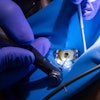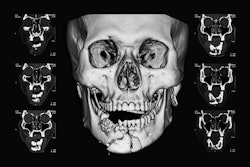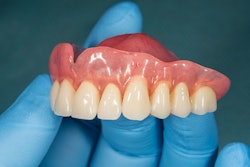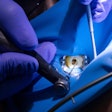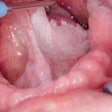Patients may be at an increased risk of pulmonary complications (PPCs) following mandibular facture surgery if they have certain predisposing factors, according to a study recently published in BMC Oral Health.
These factors may include fluid and electrolyte imbalances and circulatory issues, the authors wrote.
“The clinical importance of this study lies in its ability to help clinicians identify high-risk patients before mandibular fracture surgery,” wrote the authors, led by Shuwei Liao of the Affiliated Stomatology Hospital of Guangzhou Medical University in China (BMC Oral Health, May 14, 2025, Vol. 25, 723).
This retrospective cohort study analyzed data from the U.S. National Inpatient Sample (NIS) database, containing hospitalization records for 41,984 adult patients who underwent mandibular surgery from 2010 to 2019. The NIS database provides comprehensive information on hospital characteristics and patient demographics, they wrote.
Researchers examined risk factors for postoperative PPCs following mandibular fractures using this database. The study included all types of mandibular fractures and divided the cohort into two groups: those with PPCs and those without. Patients with PPCs were further classified into three categories, including pneumonia, acute respiratory failure (ARF), and pulmonary embolism (PE).
Among the patients included in the study, 1,347 developed pneumonia, 2,452 experienced ARF, and 212 had PE. Patients with PPCs were, on average, eight years older, had a length of stay that was 12 days longer, incurred an additional $163,579 in total charges, and had an 8.9% higher mortality rate compared to those without PPCs, they wrote.
Univariate analysis revealed that comorbidities such as alcohol abuse (19.8%), chronic pulmonary disease (10.4%), hypertension (25.9%), fluid and electrolyte disorders (46.7%), and weight loss (20.2%) were associated with an increased risk of PPCs.
Furthermore, multivariate logistic regression analysis identified specific risk factors, including congestive heart failure (OR = 1.24), coagulopathy (OR = 1.94), obesity (OR = 1.38), and pulmonary circulation disorders (OR = 7.93). Additionally, having three or more comorbidities significantly increased the risk (OR = 3.72, 40.4%).
Nevertheless, the study had limitations. Maxillomandibular fixation, a recognized risk factor for respiratory complications in the treatment of maxillofacial trauma, was not analyzed in this study, the authors added.
“By identifying these risk factors, targeted preventive measures can be implemented, this can effectively reduce the incidence of PPCs and improve patient outcomes,” they wrote.




